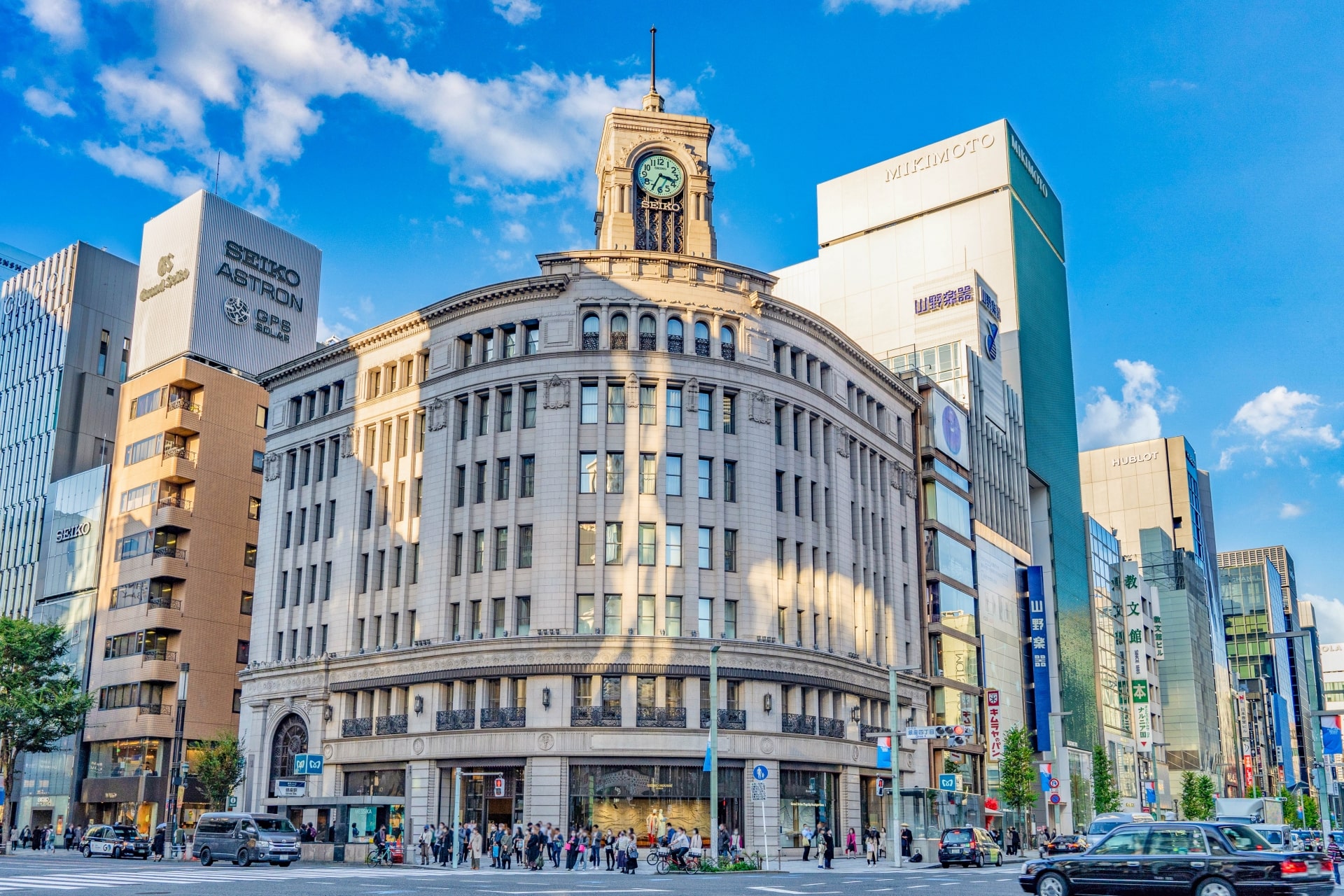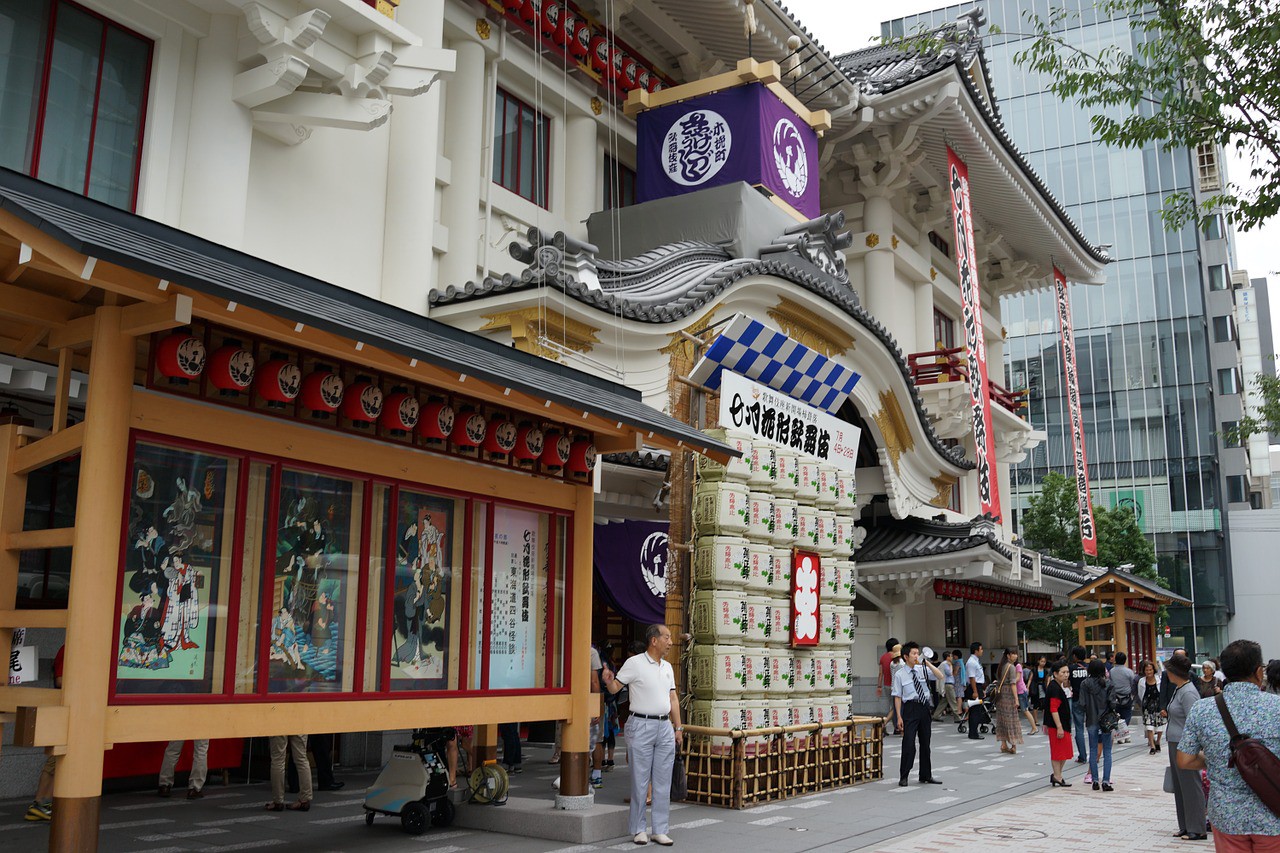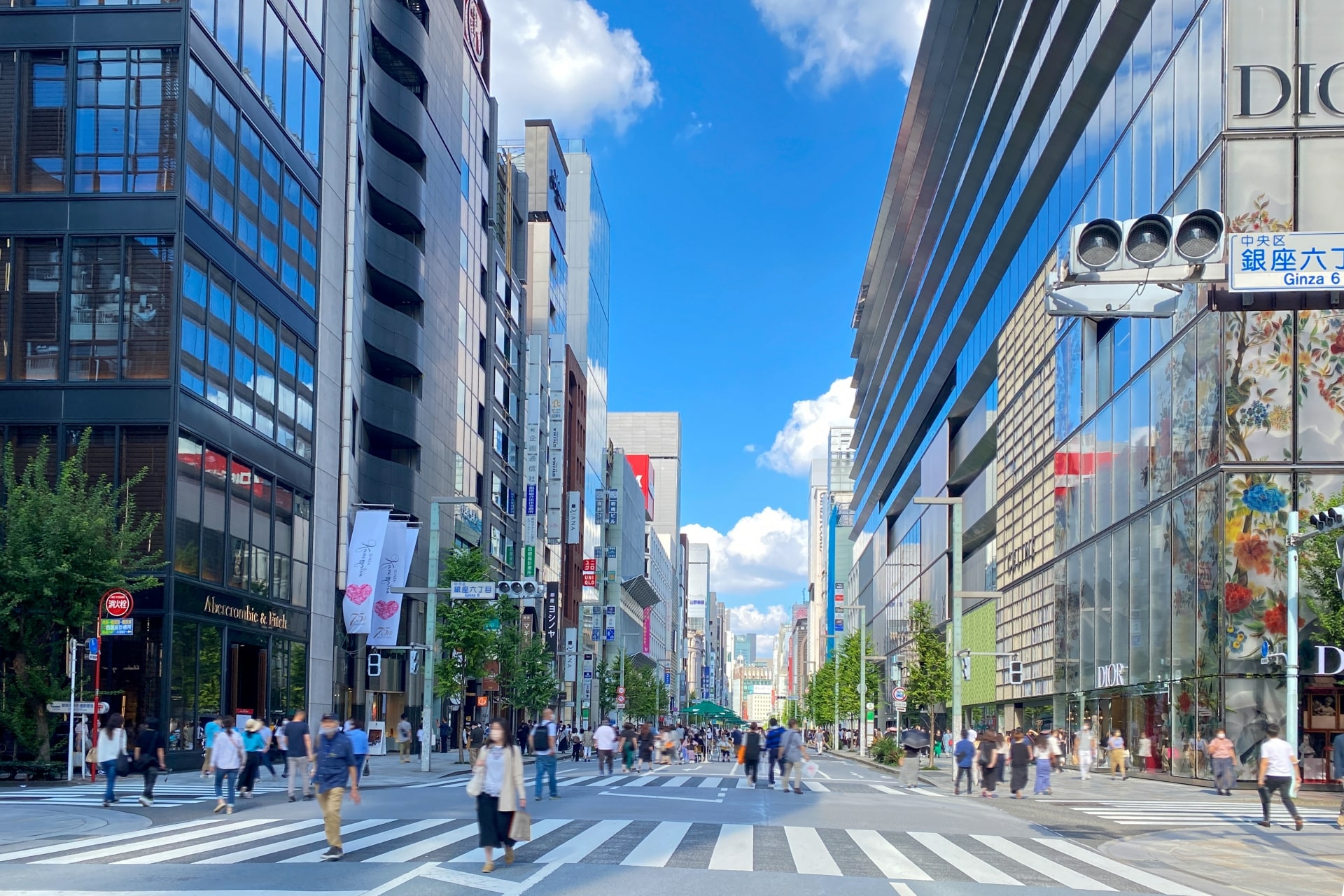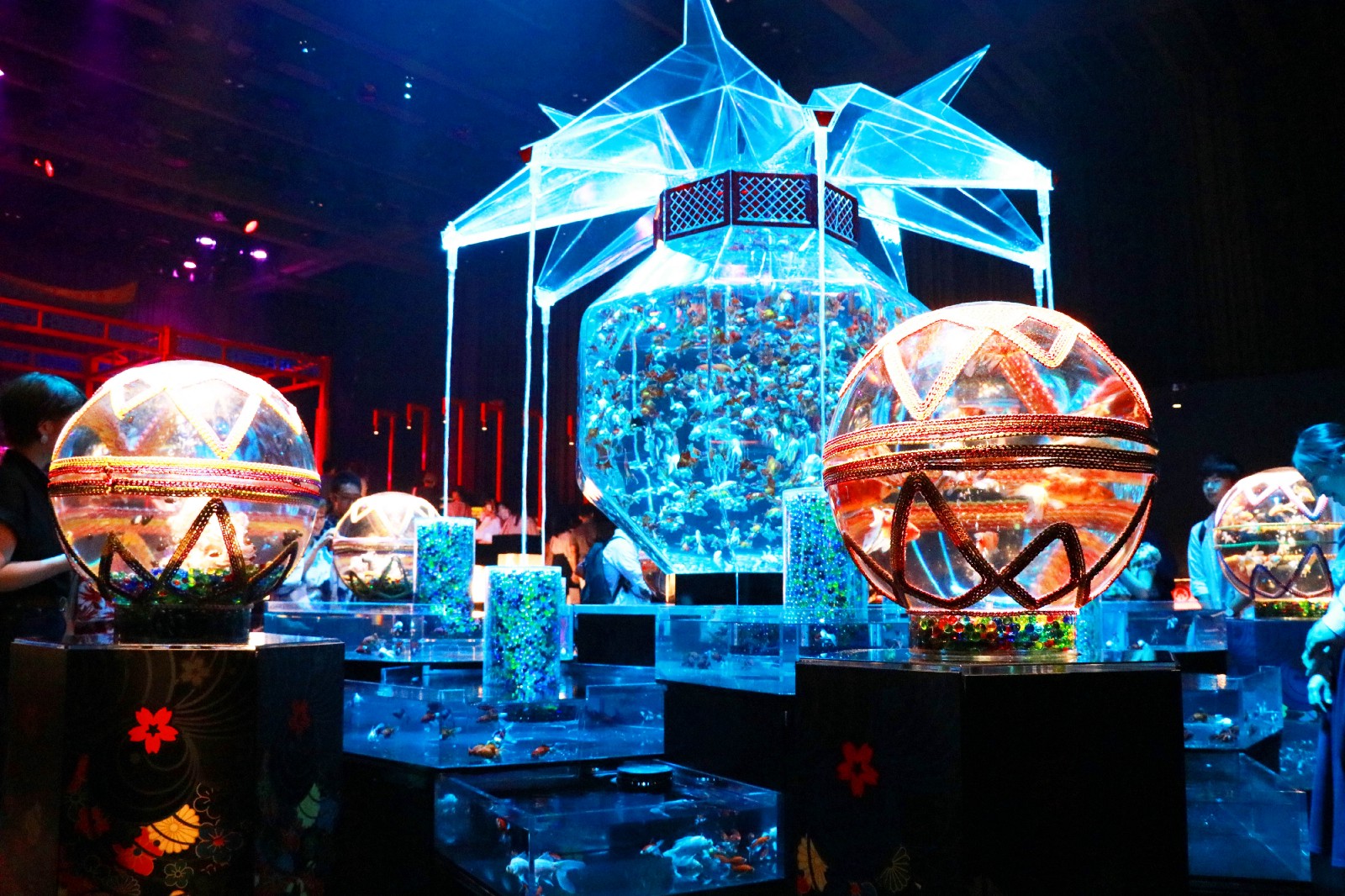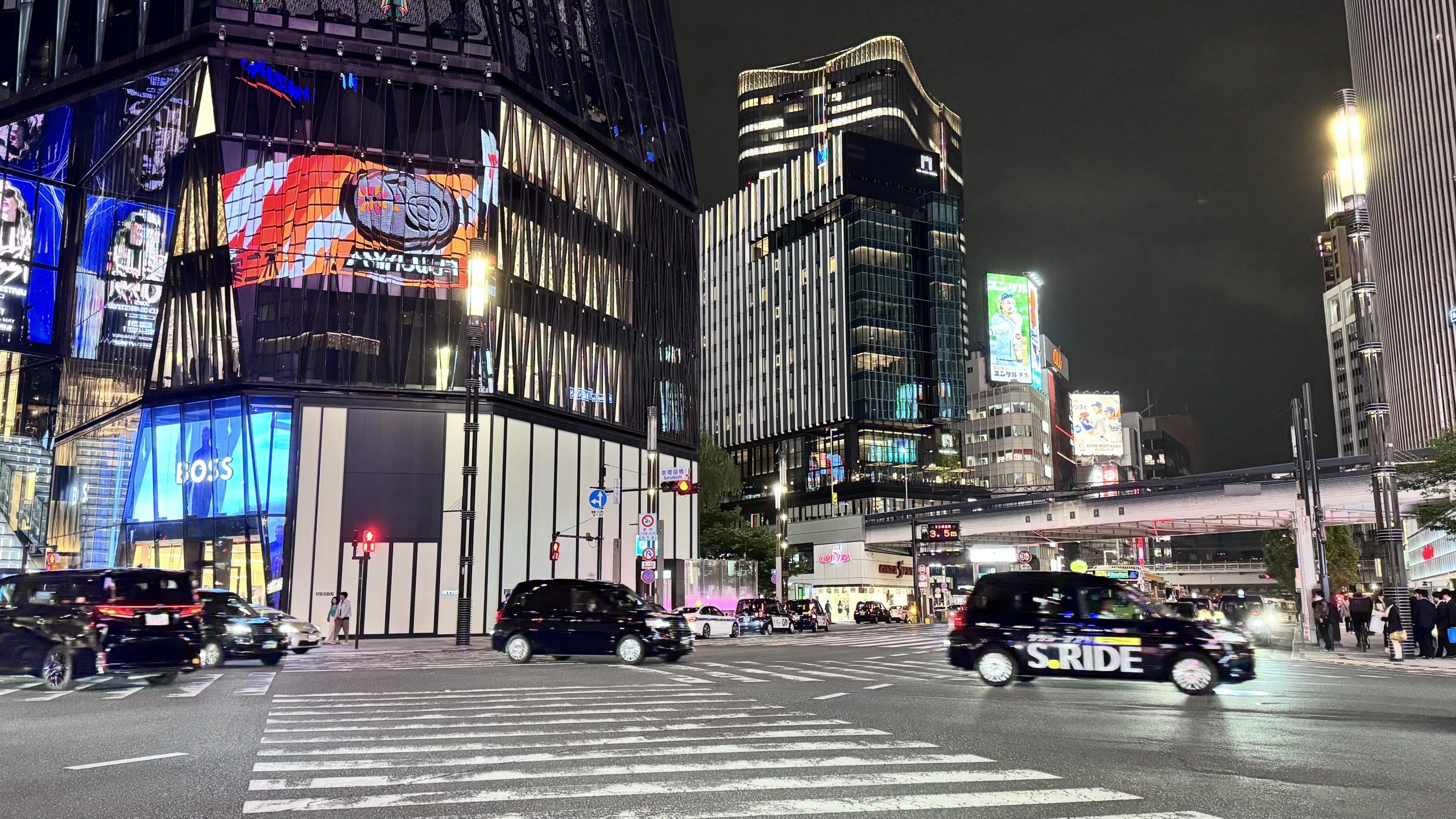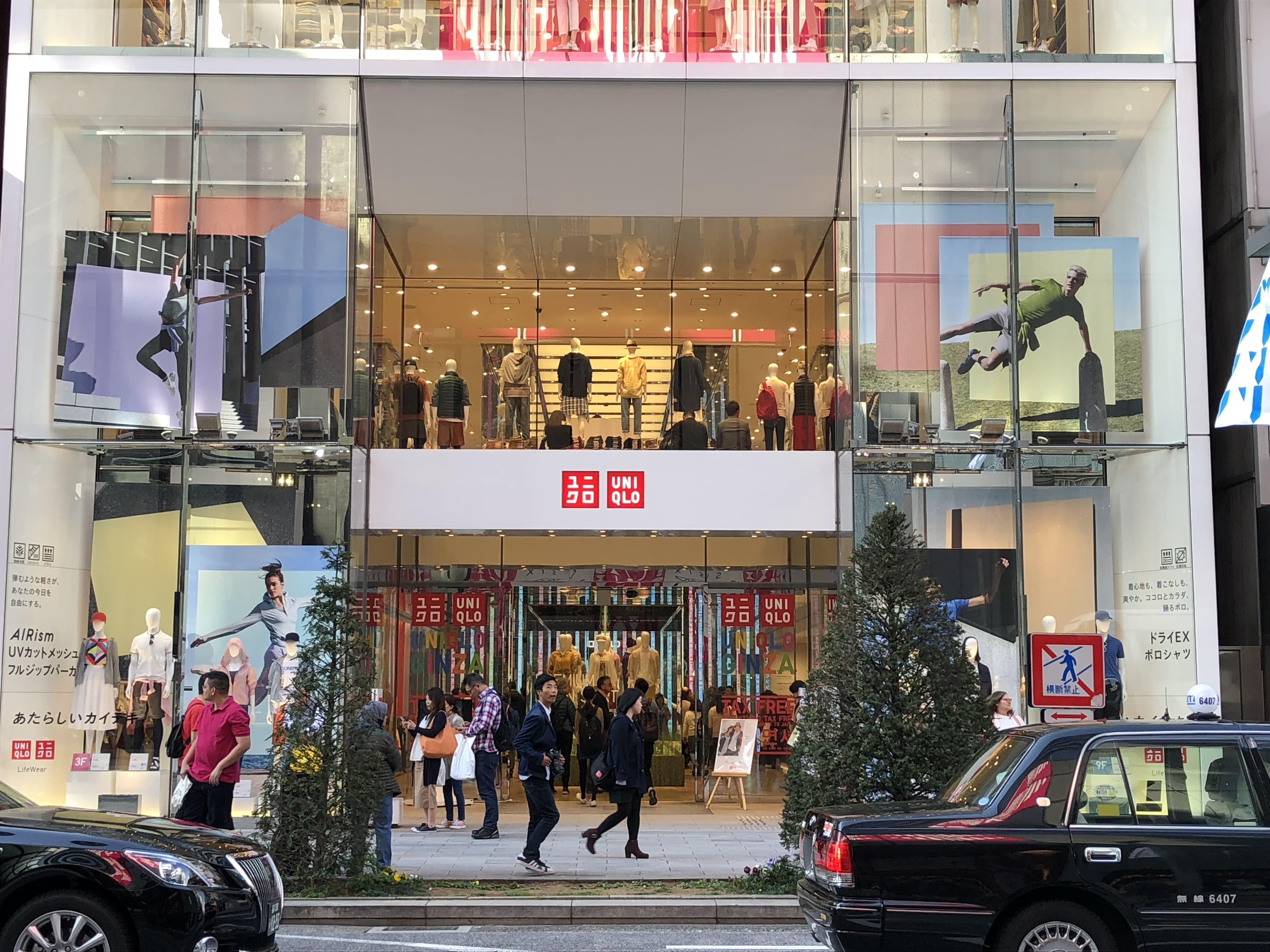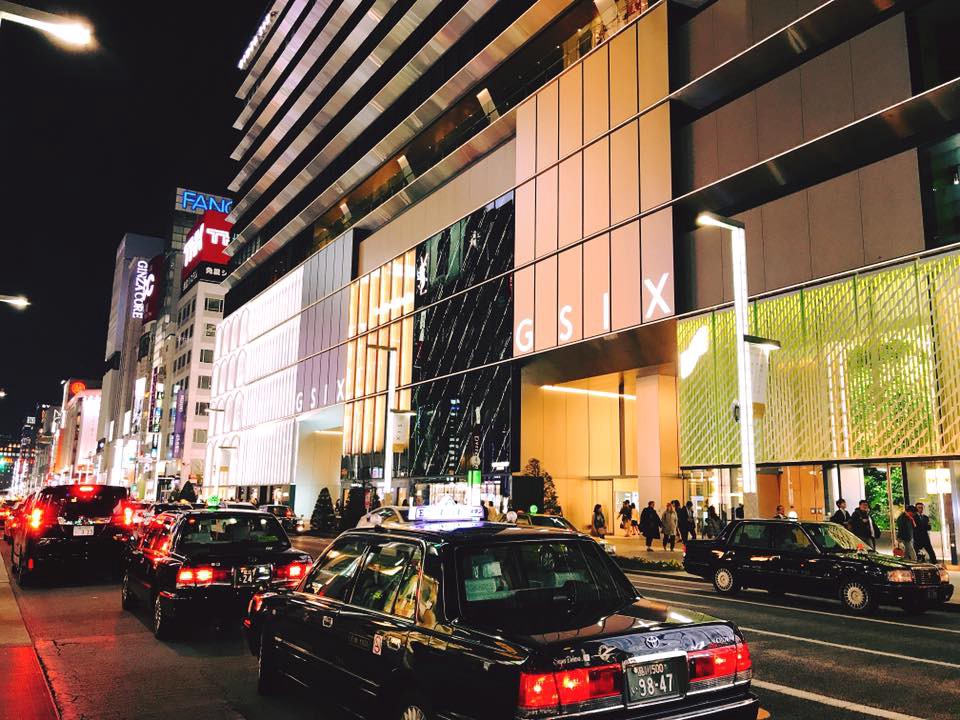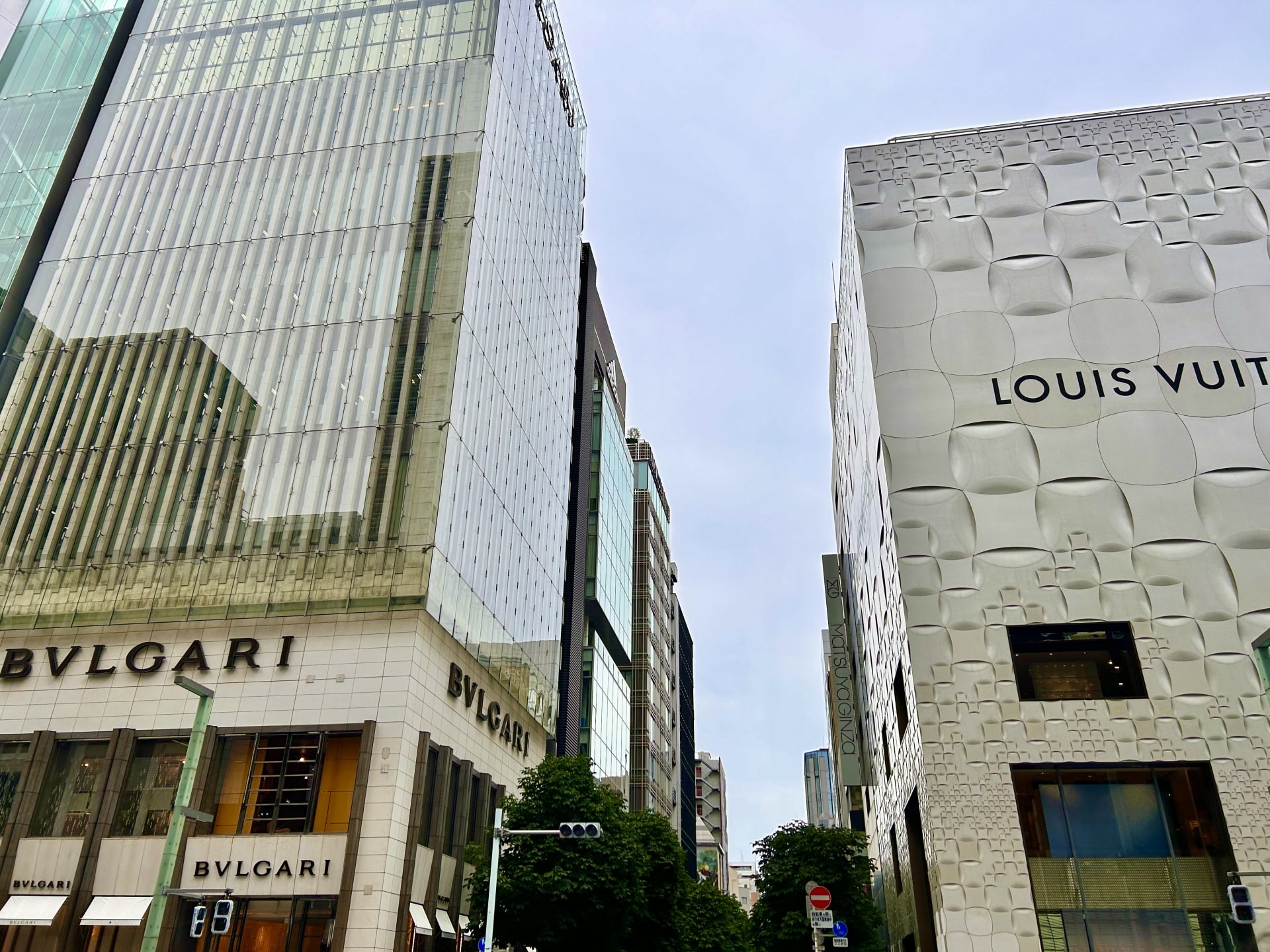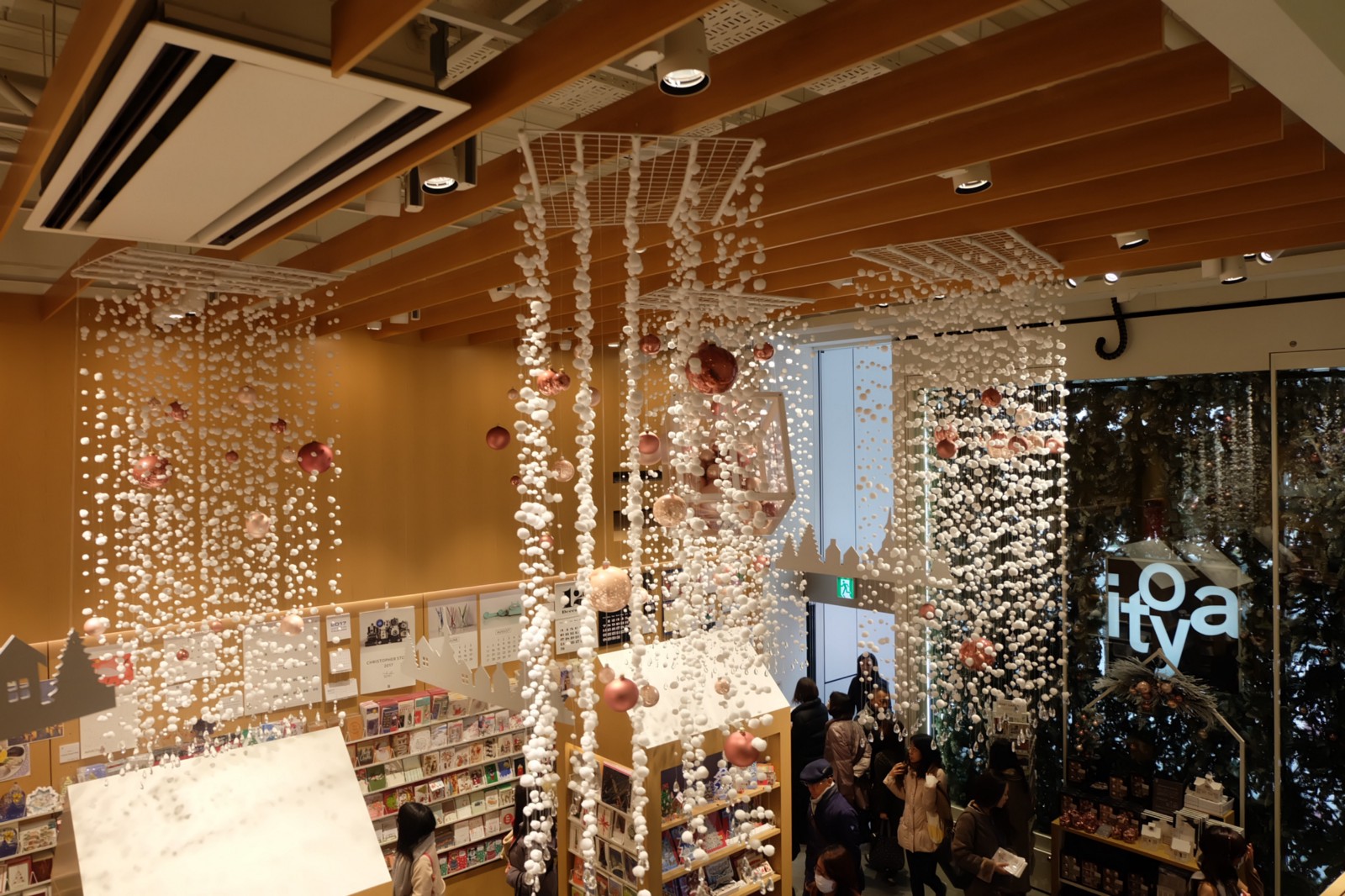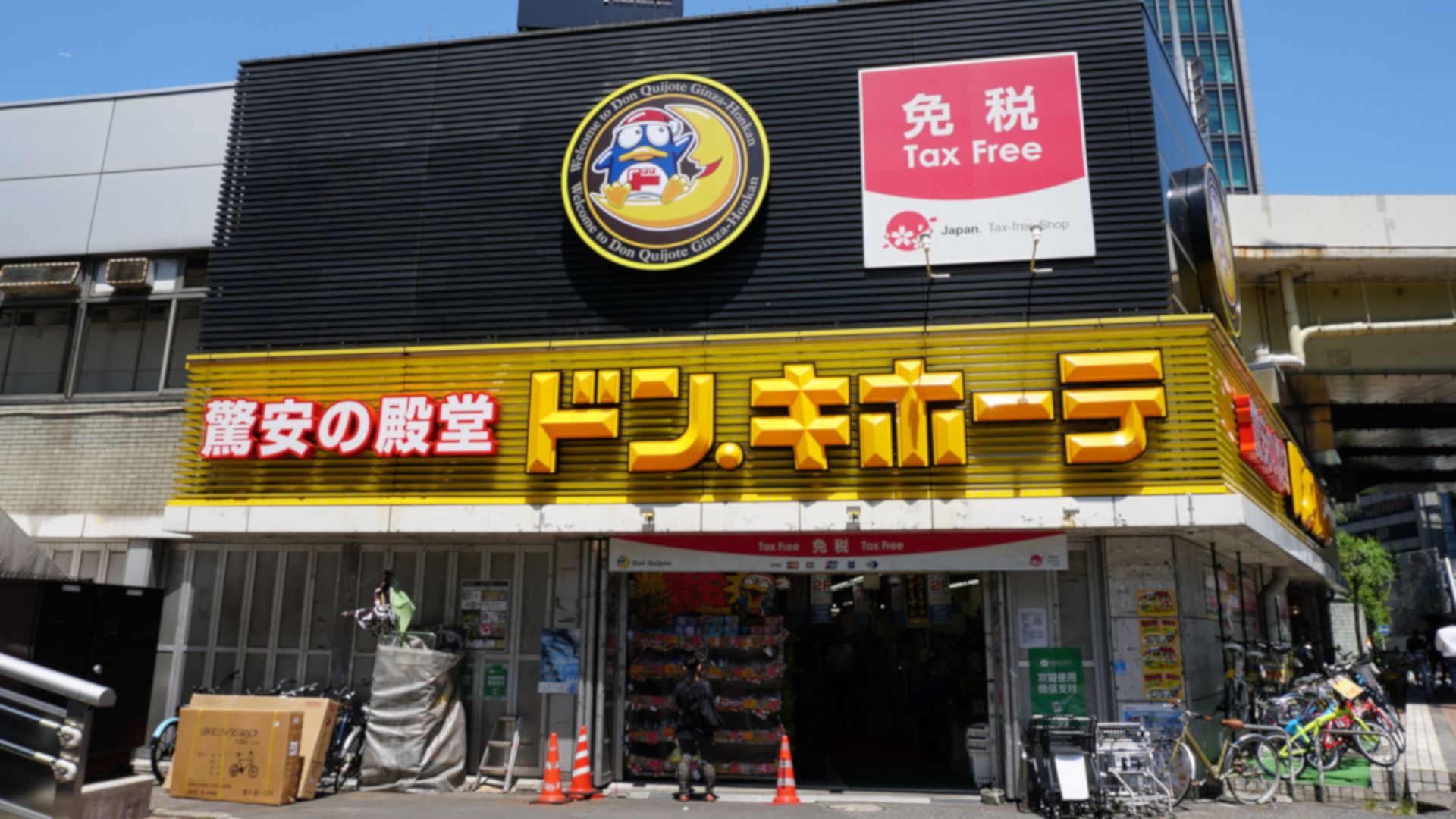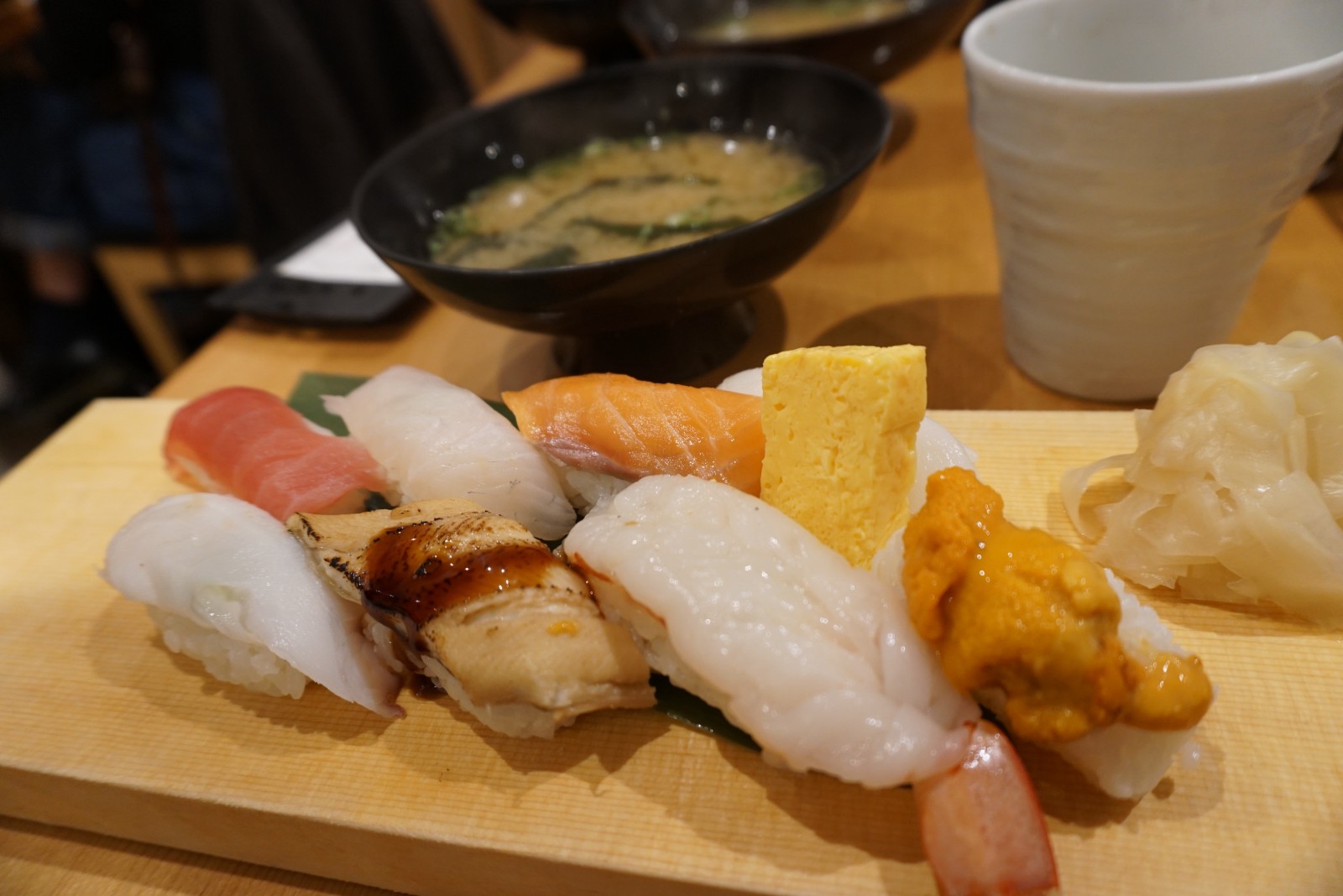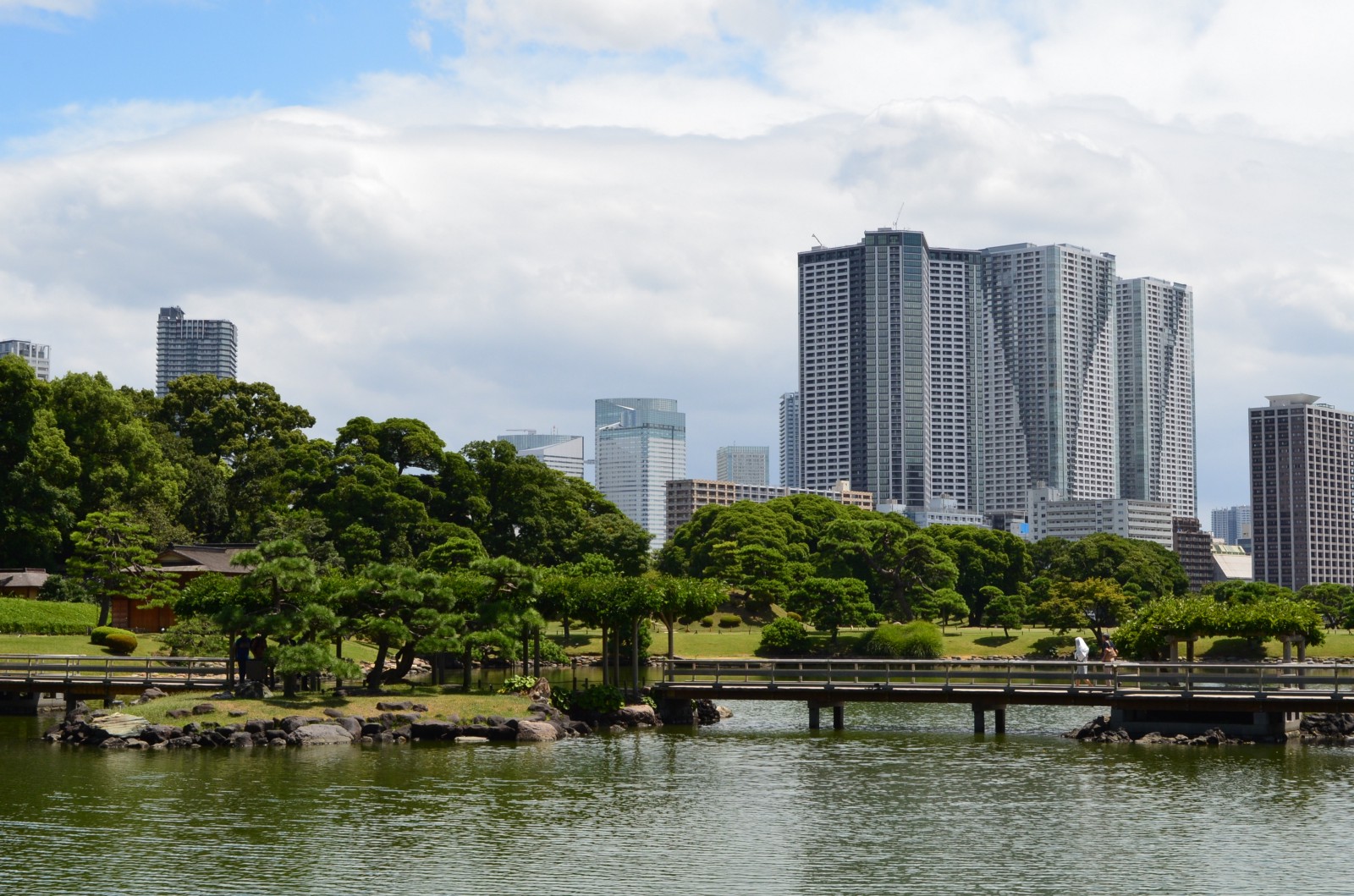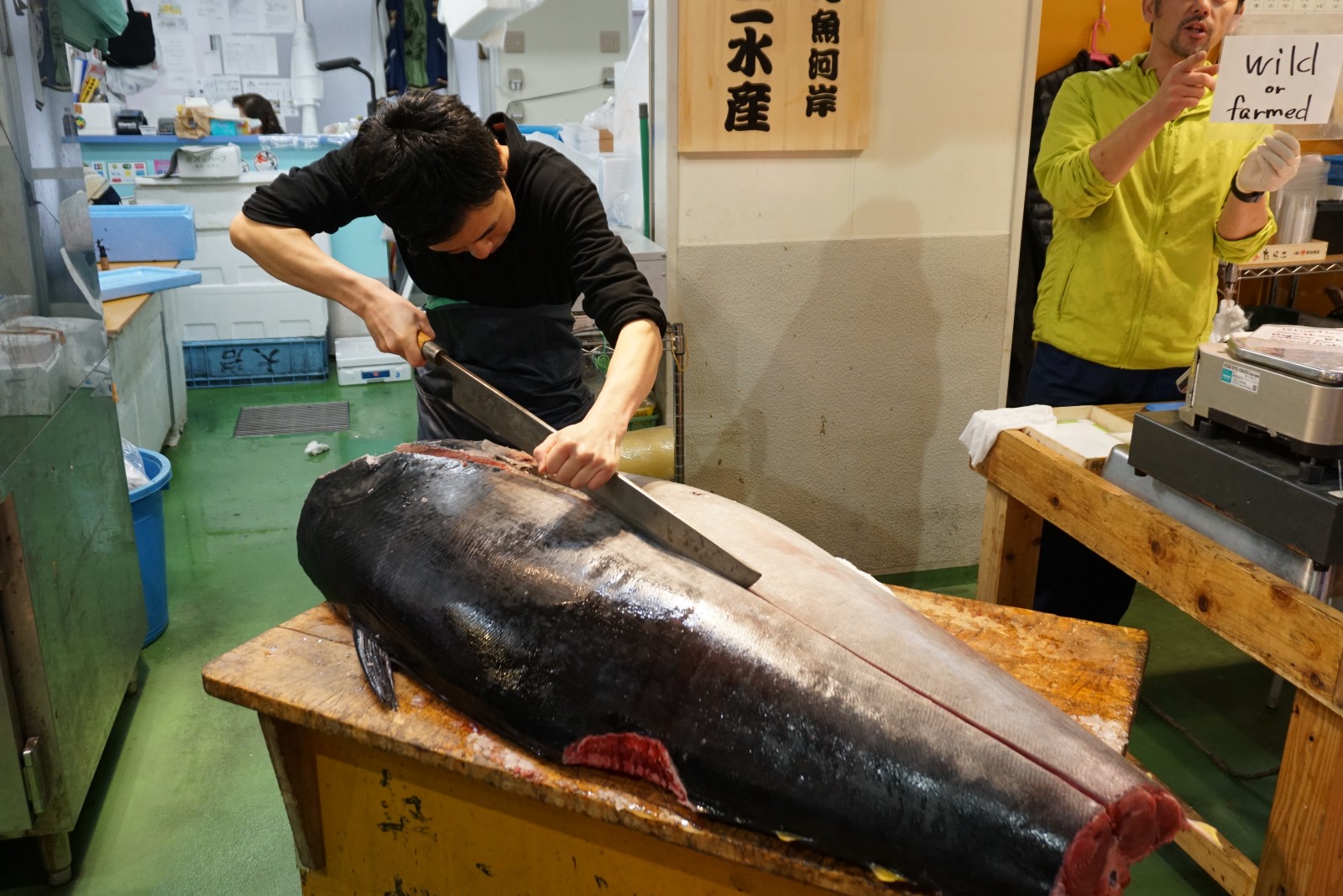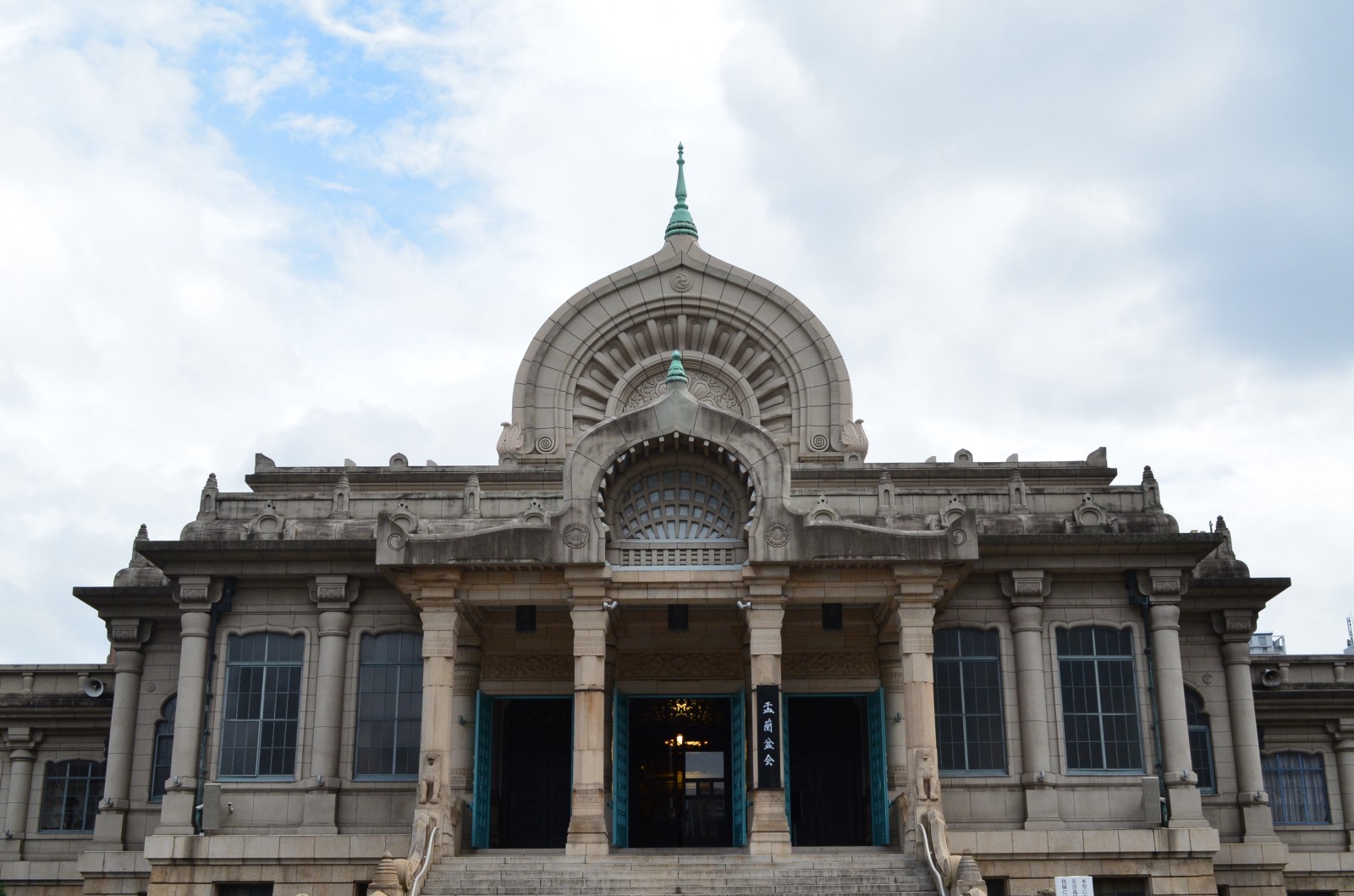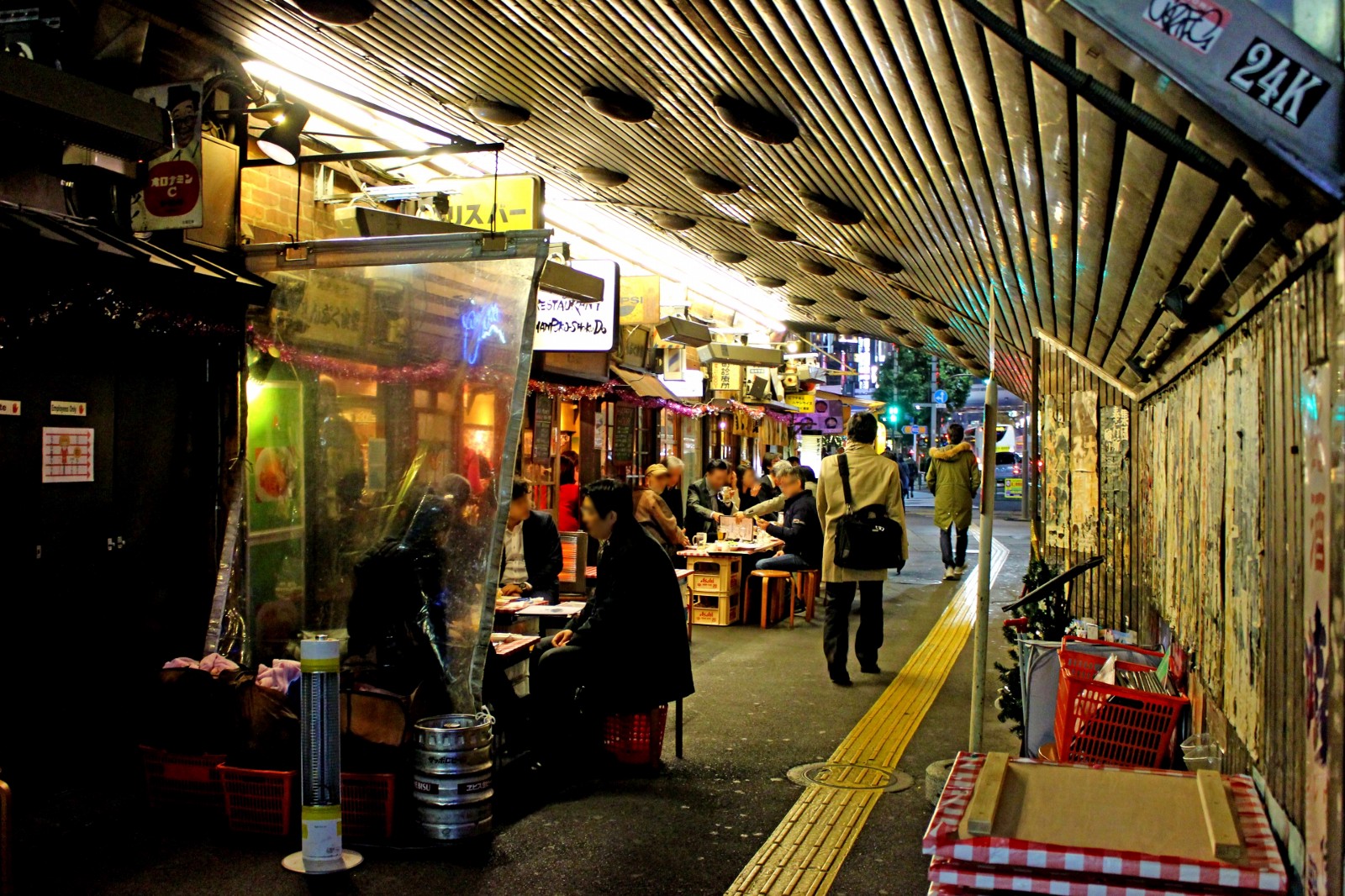20 Best Things to Do in Ginza: A First-Time Visitor’s Guide
Plan Your Perfect Day in Ginza: What to See, Eat, and Experience
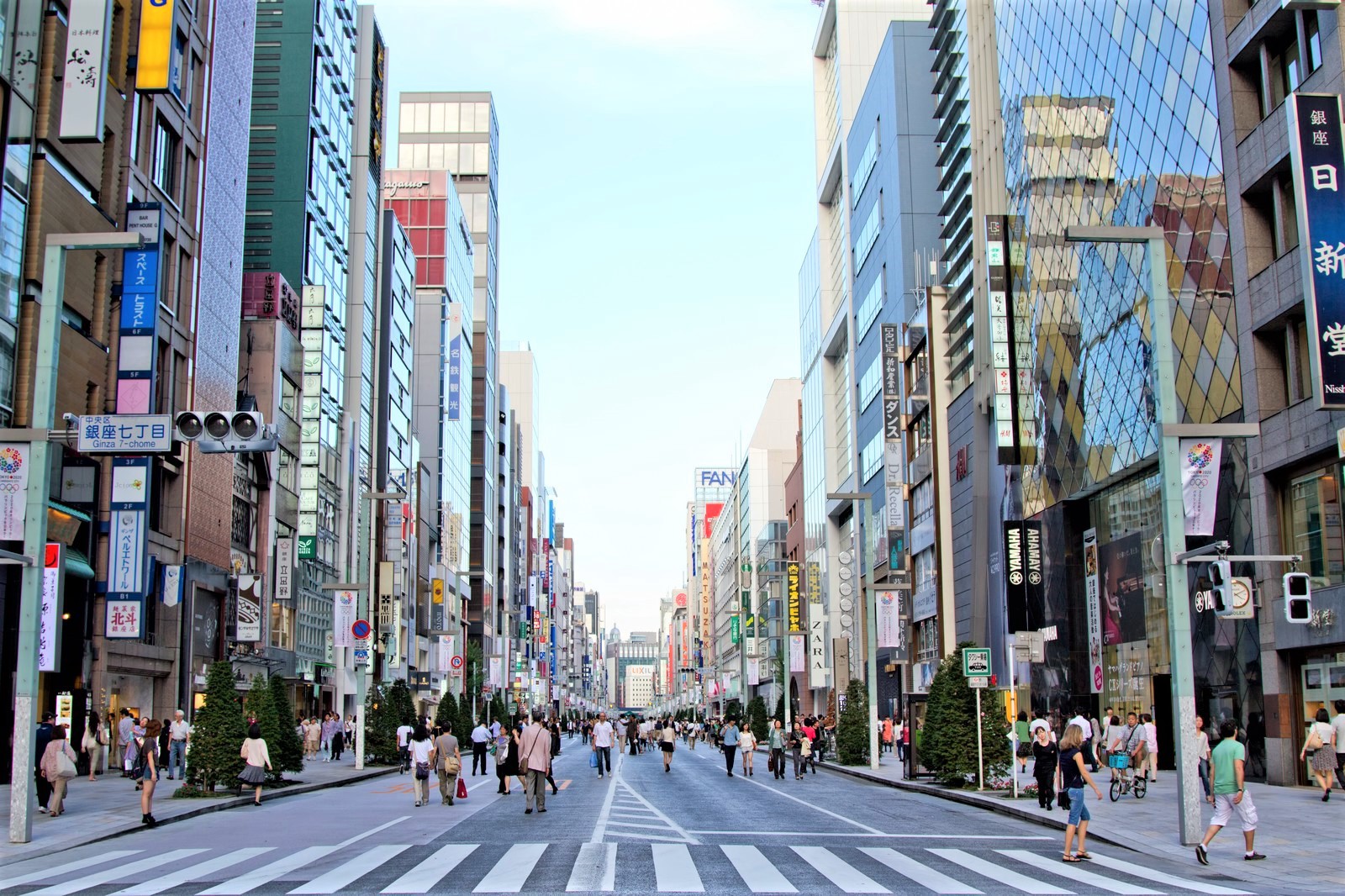
Ginza is Tokyo’s most upscale and glamorous district where luxury shopping, timeless tradition, refined culture, and world-class dining all come together. Ginza promises an unforgettable experience for every kind of traveller.
To help you make the most of your visit, we’ve created this comprehensive guide to the best things to do in Ginza, carefully selected by our Japan-based team of travel writers who have spent over a decade exploring the country. Don’t miss out on adding these unforgettable highlights to your Tokyo itinerary!
*Please note that this article contains affiliate links.
What is Ginza Famous For?
Ginza (銀座) is the most upmarket and sophisticated district of Tokyo, being home to many high-end department stores, luxury brand boutiques, art and craft shops, galleries and top-rated restaurants. It’s a perfect district for shopping and dining, centered with the Chuo Dori Shopping Street that turns a pedestrian paradise on weekends.
Visitors can also explore excellent culinary experiences in Ginza as numbers of top-notch restaurants gather in this neighbourhood, including Michelin-starred establishments and Tokyo’s finest Sushi restaurants. The world-famous Sukiyabashi Jiro, a sushi restaurant by the sushi legend Jiro Ono, is also situated in Ginza area.
Although Ginza is known for being a chic and swanky neighbourhood, you can also find unique points of interests related to culture and tradition such as Kabukiza Theater, Tsukiji Market and Yurakucho. Ginza is where old traditions and modernity coexist harmoniously together.
For an overview of what Ginza is, check out our All‑in‑One Guide to Ginza.
Best Things to Do in Ginza
All the recommended things to do are listed on the map below.
Iconic Landmarks & Attractions in Ginza
This section introduces the iconic spots that many people think of when they think of Ginza, as well as places that first-time visitors should definitely visit and experiences. In particular, it’s a good idea to research the famous clock tower and Kabuki before visiting.
1. Ginza Wako
★Must-Experience Attraction for First-Time Visitors
Ginza Wako is a long-established department store situated in the heart of the Ginza shopping street. It was established in 1881, and has a history of over 140 years with the current building built in 1932. Wako is under the Japanese clock maker SEIKO group, and the clock tower of the building is the most famous symbol of Ginza district.
Why Visit Ginza Wako?
- Browse luxury goods though a carefully curated selection of high-end watches, jewellery, fashion, and interior goods, all reflecting Japan’s attention to detail and quality.
- Visit Seiko House Ginza Hall (6F) and explore Japanese culture and craftsmanship at rotating exhibitions featuring art, design, and Japanese craftsmanship.
- Take a break at the Tea Salon (Wako Annex), serving elegant desserts and light meals, ideal for a quiet break from sightseeing or shopping.
For Who? — Travellers interested in architecture, design, or Japanese craftsmanship and shoppers looking for luxury goods
2. Kabukiza Theatre
★Must-Experience Attraction for First-Time Visitors
Kabukiza Theatre (歌舞伎座) is Japan’s premier venue dedicated exclusively to Kabuki performances. Established in 1889, the theatre has undergone several reconstructions, with the latest reopening in 2013. The current structure blends traditional Japanese architectural elements, such as a tiled roof and undulating gables, with modern facilities.
Why Visit Kabukiza? — Kabukiza is the most famous kabuki theater in Japan and the best place in Tokyo to experience this unique art form. Here’s what you can do:
- Watch a Kabuki performance available both with full plays and single act (Makumi ticket)
- The rooftop garden offers a serene escape
- Visit the Kabukiza Gallery (on the 5th floor) and learn about kabuki history, costumes, props, and stage mechanisms.
- Shop for Kabuki souvenirs such as kabuki-themed items, traditional snacks, and cosmetics.
For Who? — First-time visitors to Tokyo or Ginza
More info ▶ KABUKIZA: Traditional Kabuki Theatre in Tokyo
3. Ginza Chuo Dori High-Street
★Must-Experience Attraction for First-Time Visitors
The Chuo Dori (中央通り) is Ginza’s high-street, stretching approx 1.1 km through the Ginza district. The street is lined with department stores, luxury boutiques, restaurants, cafes, historic landmarks, and cutting-edge architecture. On weekends, the street is closed to vehicles and become a pedestrian only zone where people can safely walk and shop freely. (From 12:00 PM to 6:00 PM (April–September) and 12:00 PM to 5:00 PM (October–March))
Why Visit Ginza Chuo Dori? — Ginza Chuo Dori is the ultimate showcase of Tokyo’s blend of luxury, innovation, and tradition. This is not just a place to shop but it’s an experience. From watching the world go by during the pedestrian paradise to browsing high fashion and sampling fine wagashi (Japanese sweets), Chuo Dori offers a window into both the cutting-edge and timeless sides of Japanese culture.
For Who? — Luxury shoppers and cultural travellers
4. Art Aquarium Museum Ginza
Art Aquarium Museum Ginza is a new type of aquarium that combines goldfish and art with light, sound and fragrance effects. The aquarium museum displays a large number of colourful goldfish in fish tanks in different shapes and sizes, featuring various themes of Japanese culture. Visitors can immerse into the space filled with illumination, music and incense. It is located inside Ginza Mitsukoshi.
Why Visit the Art Aquarium Museum Ginza?
- A living art exhibition features dynamic art installations that incorporate elements of traditional Japanese culture, such as ikebana (flower arrangement) and origami, creating a harmonious blend of nature and art.
- The aquarium’s exhibits change with the seasons, offering visitors a fresh experience throughout the year.
- With its vibrant colors and unique lighting, the museum offers numerous opportunities for stunning photographs.
For Who? — Art and design enthusiasts, cultural explorers, families and couples
▶ Book Tickets to Art Aquarium Ginza
Unique Experiences in Ginza
Ginza offers a range of unique, only-in-Tokyo experiences that surprise even repeat visitors. Here are some standout activities that make Ginza more than just a glamorous shopping district.
5. Admire the Architecture
Ginza is home to numbers of cool and unique buildings designed by renowned architects, blending historic charm with ultramodern design. If you are architecture and art, you will enjoy looking at those fascinating buildings and visiting some of art galleries while strolling around Ginza.
Here are some of cool and iconic architectural landmarks in Ginza:
- Ginza Wako — The neo-Renaissance style building with its curved granite facade and clock tower.
- Tokyu Plaza Ginza — Glass prism inspired by Edo-kiriko cut glass
- GINZA SIX — Minimalist luxury by Yoshio Taniguchi (designer of MoMA NYC)
- Mikimoto Ginza 2 — Avant-garde pearl box design by Toyo Ito
- Maison Hermès — Modernist glass bricks by Renzo Piano (architect of the Pompidou Center)
- Louis Vuitton Ginza Namiki — Wavy, iridescent glass by Jun Aoki
For Who? — Travellers interested in designs, photography and urban culture
If you’re into architecture, check our related article: 10 Coolest Buildings to Photograph in Tokyo.
6. Explore Ginza’s Art Scene at Museums and Galleries
Ginza is best known for luxury shopping and refined dining, but it’s also one of Tokyo’s most dynamic districts for art and design. Blending traditional Japanese culture with global aesthetics, Ginza offers a unique environment where theater, contemporary art, architecture, and fashion converge. In addition to cultural landmarks like Kabukiza Theatre and Art Aquarium Museum Ginza, you’ll find a variety of art spaces from modern museums to galleries sponsored by top brands.
Here are some of notable mentions:
- Shiseido Gallery —Japan’s oldest existing art gallery, run by the cosmetics giant, showcasing contemporary Japanese and international artists. The exhibitions are often avant-garde and intellectually engaging.
- Maison Hermes Le Forum — Located inside the flagship Hermes building, this sleek space curates experimental art and design exhibits that mirror the brand’s craftsmanship and creativity.
- Nissan Crossing — More than just a car showroom, Nissan’s futuristic space offers interactive design exhibits and concept car displays in a gallery-like atmosphere.
- Chanel Nexus Hall — A stylish venue hosting art exhibitions, photography, and live music concerts.
Related article ▶ Best Museums and Galleries in Ginza
Shopping in Ginza
Ginza is Tokyo’s luxury shopping hub, home to flagship stores of high-end brands, prestigious Japanese department stores, traditional craft stores, fast fashion retailors and more. Here, we introduce unmissable shops and things to do for shopping enthusiasts in Ginza.
More info ▶ Ginza Shopping Guide: 15 Best Shops in Ginza
7. UNIQLO GINZA
UNIQLO is a popular Japanese fashion brand, known for high-quality, minimalistic and affordable clothes. UNIQLO’s global flagship store UNIQLO GINZA is located in the Ginza Chuo Dori high street.
Spread across 12 floors, the largest UNIQLO store in the world offers the full range of LifeWear apparel for men, women, kids, and babies, plus exclusive services and experiences you won’t find anywhere else.
Highlights of UNIQLO Ginza:
- UNIQLO Coffee (12F) — At the top floor, relax at UNIQLO COFFEE, a stylish cafe serving original blends and sweets from the beloved Ginza West patisserie. It’s a perfect break spot with panoramic views over the Ginza streetscape.
- UNIQLO Flower (1F) — Brighten your day with fresh bouquets at UNIQLO FLOWER, an unexpected but charming feature of the store. Affordable, seasonal flowers make a great souvenir or gift.
- Visitors can experience the Custom Order Salon for tailored suit (10F), consultation service for innerwear (6F) and custom corner for personalized shopping experience (5F).
- UT Graphic T-Shirts & Photo Booth (11F) — Explore the popular UT (Uniqlo T-shirt) collection, featuring collaborations with artists, pop culture icons, and global brands. Don’t miss the in-store photo booth for a fun memory.
More info ▶ 5 Must-Buy Items at UNIQLO GINZA
8. GINZA SIX
GINZA SIX is a department store in Ginza, featuring a cool and edgy building. The store was built on the former location of Matsuzakaya, which opened in Ginza in 1924 as the first department store in Japan then closed in 2013 after nearly 90 years. The name Ginza Six is after the building address in Ginza 6-chome as well as the desire to provide an exceptional “six-star” shopping experience.
Highlights of GINZA SIX:
- Opened in 2017, this luxury complex houses over 200 brand stores, including DIOR, Fendi, CELINE, YSL and LOEWE as well as restaurants and cafes.
- It also consists of a spacious rooftop garden, art installations, and a Noh theater.
- Designed by architect Yoshio Taniguchi (designer of MoMA NYC), it’s a modern marvel that blends retail with culture
For more information about department stores in Ginza and Tokyo, please check following links!
▶ Best Department Stores in Tokyo
9. Luxury Brand Outlets
If you seek to shop luxury brand items in Tokyo, Ginza is a right place to be as the district is home to numbers of high-end brands’ outlets and jewellers.
Here are some of the most notable luxury brand outlets and flagship stores in Ginza:
- Louis Vuitton Ginza Namiki dori— One of Tokyo’s most iconic LV buildings, offering limited-edition pieces and a rooftop private salon for VIP clients.
- Chanel Ginza — Located in a 10-story building with a modern glass facade, featuring a boutique, beauty floor, and the NexuS Hall for cultural events and exhibitions.
- Dior Ginza — Known for its striking architecture and refined interiors. Dior often launches Japan-exclusive collections here.
- Hermes Maison Ginza — Find everything from fine leather goods to the Le Studio Hermes gallery space and an in-house cafe.
- GUCCI Ginza — Offers a wide range of fashion, leather goods, and watches, often with Japan-exclusive designs.
- Bulgari Ginza Tower — Features a boutique, luxury restaurant, and the exclusive Bulgari Il Ristorante Luca Fantin and rooftop bar.
- Mikimoto Ginza 2 — The birthplace of cultured pearls. This architecturally unique store offers exquisite jewelry and is a symbol of Japanese luxury craftsmanship.
- For a one-stop luxury experience, head to shopping complexes with multiple luxury brands like GINZA SIX, Matsuya Ginza and Ginza Mitsukoshi.
For Who? — Luxury shoppers and fashion enthusiasts: Interested in the latest collections, brand architecture, and limited collaborations.
▶ Best Luxury Brand Shops in Ginza
10. Shop Japanese Stationery at Ginza Itoya
Japanese stationery goods are highly regarded for its quality and design. The massive stationary store, Ginza Itoya located right off the high street of Ginza, offers a wide selection of stationery spread across 12 floors, including pens, pencils, papers, postcards, office supplies and art tools.
Highlights of Ginza Itoya:
Each level of G.Itoya offers a unique theme, catering to various creative and professional needs:
- Discover an array of greeting cards and letter-writing essentials and the “Write & Post” area.
- Find a curated selection of stationery and office supplies designed to enhance productivity and organization.
- Enhance your living space with home office supplies and decor.
- The craft floor with a hands-on space filled with washi tapes, stickers, stamps, and scrapbooking tools, also hosting occasional workshops.
- Observe hydroponic farming in action, with fresh produce used in the store’s cafe.
For Who? — Stationery and design lovers, professionals and travellers seeking unique, high-quality souvenirs
More info ▶ Ginza itoya : the Best Stationery Store in Tokyo
11. Don Quijote Ginza Store
Ginza is best known for luxury boutiques and high-end department stores, but you can actually find affordable products, too. Don Quijote or called Donki has a branch in Ginza area, offering a wide variety of products including food, drinks, beauty products, souvenirs, clothes, home appliances, electronics products, toys, etc, often sold at discounted price.
Highlights of Don Quijote Ginza:
- Fashion & Accessories: Casual wear, shoes, bags, and accessories for all ages.
- Cosmetics & Beauty Products: Japanese and international brands at competitive prices.
- Electronics & Appliances: A range of gadgets, from headphones to kitchen appliances.
- Food & Beverages: Snacks, sweets, and a notable selection of Japanese whiskies and wines.
- Souvenirs & Toys: Unique Japanese souvenirs, toys and cosplay items
For Who? — Bargain hunters, souvenir shoppers and late-night shoppers
Learn more about shopping in Don Quijote ▶ Best Things to Buy at Don Quijote
Dining in Ginza
Ginza is one of the top culinary destinations in Japan, offering something for every taste and budget from historic sushi counters and Michelin-starred dining to affordable gourmet meals and mouth-watering ramen. With its blend of tradition and innovation, Ginza is a food lover’s paradise worth exploring.
For more details, check our dedicated Ginza Food Guide.
12. Eat Sushi
Ginza’s reputation as a premier destination for sushi is deeply rooted in its historical and geographical context. Its close proximity to the former Tsukiji Fish Market, which operated from 1935 until its relocation in 2018, gave local restaurants unparalleled access to the freshest seafood.
Some of the most renowned sushi restaurants in Ginza are:
- Sukiyabashi Jiro — Perhaps the most iconic sushi restaurant in the world, made famous by the documentary Jiro Dreams of Sushi. Known for its precise and minimalist omakase, though reservations are notoriously difficult and limited to returning customers or those with hotel concierge help.
- Kyubey — A long-standing favorite among locals and international visitors alike, Kyubey offers excellent omakase and is often considered more accessible than Jiro.
- Sushi Yoshitake — 3-star sushi masterwork known for intimate service and aged fish techniques
More info
▶ Best Sushi in Ginza: from Kyubey to Sukiyabashi Jiro
▶ Best Sushi in Tsukiji
13. Slurp a Bowl of Ramen
Beyond sushi, Ginza offers plenty for ramen lovers seeking comforting bowls packed with flavor. In addition to popular chains like Ippudo and Ichiran, the area is known for its creative and refined ramen shops.
Notable mentions for ramen in Ginza:
- Mugi to Olive — known for its signature clam-based soup and elegant presentation
- Ginza Kamo Soba Kyudaime Keisuke — featuring a unique duck broth ramen experience
More info ▶ Best Ramen in Ginza
14. Michelin-Starred Restaurants and Fine Dining
Ginza has one of the highest concentrations of Michelin-starred restaurants in Tokyo, making it a dream destination for gourmet travelers. These restaurants showcase Japan’s finest seasonal ingredients through exceptional technique, hospitality, and presentation.
Some standout names of Ginza’s fine dining include:
- Ginza Kojyu — elegant kaiseki dining that celebrates harmony, balance, and Japanese aesthetics
- Tempura Kondo — chef Fumito Kondo’s perfectly crisp tempura highlights fresh ingredients
- L’OSIER — a Michelin-starred French restaurant offering refined dishes with Japanese influences in a luxurious setting
15. Casual Dining
Ginza isn’t all luxury and there’s also a fantastic variety of casual eateries serving authentic Japanese flavors at friendly prices. These restaurants offer great quality in an approachable setting, ideal for solo travelers, families, and anyone on a flexible budget.
Top casual picks for dining in Ginza:
- Tonkatsu Aoki — crispy, juicy pork cutlets served in a simple but refined space
- Sushi no Midori — Authentic sushi sets served in a casual setting.
- Godaime Hanayama Udon— Handmade udon with serious bite and hearty servings.
16. Depachika Food Halls
For a unique and ultra-Japanese dining experience, don’t miss Ginza’s depachika. These gourmet wonderlands feature bento boxes, sushi trays, French patisserie, Japanese sweets (wagashi), and imported cheeses and wines You can either enjoy a picnic-style meal at a nearby park or take food back to your accommodation. The quality rivals restaurant-level dining, and it’s a fun way to sample a wide range of flavors in one visit.
Try the basement food halls of luxury department stores like Mitsukoshi, Matsuya, and Ginza Six.
Nearby Spots from Ginza
Ginza’s central location in Tokyo makes it the perfect starting point to explore some of the city’s other must-see neighborhoods. From tranquil gardens to food adventures, here are the top nearby spots to add to your Ginza itinerary:
17. Hamarikyu Gardens
The real oasis in a concrete jungle. Hamarikyu Gardens (浜離宮恩賜庭園) was originally built as a feudal lord’s Tokyo residence and duck hunting grounds during the Edo Period and is now a public park, complete with tidal ponds, a traditional teahouse, and seasonal flowers.
Why Visit Hamarikyu?
- The garden’s central feature is a seawater pond that rises and falls with the tides — a unique feature among Tokyo’s gardens.
- Stunning in all seasons: cherry blossoms in spring, yellow rapeseed in early spring, irises in early summer, fiery maple leaves in autumn, and crisp, quiet views in winter.
- The Nakajima no Ochaya, a wooden teahouse on an island in the pond is where visitors can sit on tatami mats, sip matcha tea, and enjoy views once reserved for nobility.
- Surrounded by high-rise buildings from nearby Shiodome, the garden creates a striking visual contrast between Tokyo’s traditional past and modern skyline.
For Who? — Nature lovers, garden enthusiasts and cultural travellers
More info ▶ Hamarikyu Garden: Scenic Japanese Garden near Tsukiji Fish Market
18. Tsukiji Outer Mark
★Must-Experience Attraction for First-Time Visitors
Just a short walk from Ginza, the Tsukiji Outer Market (築地場外市場) remains one of Tokyo’s most beloved culinary destinations. While the inner wholesale market relocated to Toyosu in 2018, the outer market continues to thrive, packed with small eateries, specialty shops, and vibrant street food stalls.
Why Visit Tsukiji Outer Market?
- Experience the atmosphere of a traditional Japanese market, where chefs, vendors, and locals mingle in a lively setting that reflects the city’s culinary roots.
- Indulge in a variety of freshly prepared dishes, such as takeout sushi with fresh seafood, tamagoyaki (Japanese omelet) and grilled scallops.
- Located just 10–15 minutes by foot from Ginza, it’s the perfect detour for breakfast, brunch, or lunch before or after exploring the area.
For Who? — Foodies, culinary travellers and first-time visitors
More info ▶ Perfect Guide to Tsukiji Fish Market
The best way to experience the fascinating food culture in Tsukiji area is to join a food tour led by a local expert guide! Explore hidden parts of Tsukiji area, and try out authentic street food and delicious seafood with the Tokyo Fish Market Tour, one of the most popular food tours in the city today!
More info ▶ Enjoy Local Food and Drink at Tsukiji Fish Market
Check the tour review ▶ Tsukiji Fish Market: Best Food Walking Tour in Tokyo
19. Tsukiji Hongwanji Temple
Tsukiji Hongwanji Temple (築地本願寺) is one of Tokyo’s most architecturally unique and culturally rich Buddhist temples. Unlike traditional wooden temple structures seen across Japan, this temple immediately catches the eye with its ancient Indian-inspired design, complete with a massive central dome, stone carvings of various creatures. It’s open to the public with no admission fee.
Why Visit Tsukiji Hongwanji Temple?
- Influenced by South Asian, Middle Eastern, and Western styles, Tsukiji Hongwanji provides a striking contrast to typical temples in Tokyo.
- The temple’s origins, destruction, and rebirth tell the story of Tokyo’s urban evolution, especially in the Tsukiji area.
- The temple frequently hosts musical performances, seasonal festivals, and Buddhist lectures, offering a deeper look into modern Buddhist practices in Japan.
- Located right next to the busy Tsukiji Outer Market, it’s a great place to pause and reflect before or after enjoying the fast-paced market.
For Who? — Architecture and design lovers, and history and culture enthusiasts
More info ▶ Tsukiji Hongwanji Temple
20. Yurakucho
Tucked between the gleaming storefronts of Ginza and the modern business towers of Marunouchi, Yurakucho (有楽町) offers a different side of Tokyo that blends retro charm with authentic local flavor. The heart of the area is Gado-shita, a lively stretch of izakayas and eateries tucked under the red brick arches of the JR Yamanote Line.
Why Visit Yurakucho?
- Experience everyday Tokyo as locals do with cold beer, yakitori, and friendly conversation in a lively setting under the train tracks.
- Contrasts with luxury Ginza, Yurakucho offers an approachable, unpolished, and soulful side of the city, perfect for diversifying your Tokyo experience.
- Many spots offer great food at affordable prices, making it easy to sample multiple places in one evening.
- The area preserves the look and feel of Showa-era Tokyo, offering a rare chance to feel the city’s nostalgia within its modern core.
For Who? — Foodies, izakaya lovers and night owls
More info ▶ Best Things to Do in Yurakucho
Suggested Ginza Itineraries for First-Time Visitors
Ginza can feel overwhelming with its luxury shopping, gourmet dining, and cultural attractions packed into just a few blocks. Depending on how much time you have to explore, here are a few thoughtfully crafted itineraries to help first-time visitors make the most of their time.
Half-Day Highlights: Classic Ginza Walk
Perfect for — First-timers with limited time who want a little bit of everything.
- 10:00 AM — Start your day with a visit to Kabukiza Theatre (even if you don’t see a performance, explore the gallery and rooftop garden).
- 10:45 AM — Walk down Ginza Chuo Dori, the district’s iconic boulevard lined with flagship stores and architectural highlights.
- 11:15 AM — Stop by Ginza Wako for a photo under the iconic clock tower and browse the luxury watches and fine goods.
- 11:45 AM — Explore UNIQLO Ginza, one of the world’s largest Uniqlo stores with Japan-exclusive items and special floors.
- 12:30 PM — Grab lunch at a sushi spot like Sushi Kyubey or try casual Japanese fare in Ginza Six’s food court.
Full-Day Highlights: Gourmet + Culture Course
Perfect for — Foodies and culture seekers who want to dive deeper.
- 9:30 AM — Start your day at Tsukiji Outer Market with takeout sushi, grilled seafood, and tamagoyaki.
- 11:00 AM — Visit Tsukiji Hongwanji Temple, known for its rare Indian-style Buddhist architecture.
- 12:00 PM — Walk to Ginza Itoya, the ultimate stationery paradise, and enjoy a light lunch or tea at its cafe on the upper floors.
- 2:00 PM — Explore Ginza Six, including the rooftop garden, art installations, and luxury shopping.
- 4:00 PM — Take in Ginza’s contemporary art scene at nearby Shiseido Gallery, Chanel Nexus Hall, or Art Aquarium Ginza.
- 6:00 PM — Enjoy a Michelin-starred dinner at Sushi Tokami, Tempura Kondo, or opt for casual izakaya dining in Yurakucho Gado-shita.
Seasonal Events & Best Times to Visit Ginza
- Spring (March-May): Cherry blossoms and mild weather make it ideal for walking tours.
- Summer (June-August): Experience traditional festivals and enjoy seasonal delicacies.
- Autumn (September-November): Pleasant temperatures and autumn foliage enhance the shopping experience.
- Winter (December-February): Holiday illuminations and New Year sales attract many visitors.
Spring and autumn are considered to be the best time to visit Ginza as they offer pleasant weather and seasonal events.
Practical Information
Access
Ginza is accessible via several subway lines:
- Ginza Station (Tokyo Metro Ginza, Hibiya, and Marunouchi Lines)
- Higashi-Ginza Station (Tokyo Metro Hibiya Line, Toei Asakusa Line)
- Yurakucho Station (JR Yamanote Line, Tokyo Metro Yurakucho Line)
From Haneda Airport:
Keikyu Line to Higashi-Ginza (about 20–25 mins)
Tokyo Monorail + JR or Tokyo Metro Transfer (about 30 mins)
From Narita Airport:
Narita Express (N’EX) + Tokyo Metro Transfer (about 60 mins)
Keisei Skyliner + JR Transfer (about 60–75 mins)
Language & Accessibility
Many establishments in Ginza offer multilingual support. Facilities are generally accessible, but it’s advisable to check in advance for specific needs.
Safety
Ginza is considered one of Tokyo’s safest districts. Standard precautions are recommended.
Budget Tips
While known for luxury, Ginza also offers affordable dining and shopping options.
Where to Stay in Ginza
Ginza offers a range of accommodations to suit various budgets:
- Luxury: The Peninsula Tokyo, Conrad Tokyo
- Mid-Range: Hotel Monterey Ginza, Mitsui Garden Hotel Ginza Premier
- Budget: Tokyu Stay Ginza, Sotetsu Fresa Inn Ginza-Nanachome
How Does Ginza Compare to Other Upscale Areas in Tokyo?
Besides Ginza, Tokyo has several other upscale shopping districts that can be compared in terms of luxury, design, and exclusive retail experiences. Let’s compare Ginza with a few other Tokyo neighborhoods that share a similar atmosphere. It might give you more options to consider for your trip.
Ginza vs. Omotesando
Omotesando (表参道) is often referred to as Tokyo’s Champs-Élysées, this tree-lined avenue is renowned for its high-end boutiques and flagship stores of international luxury brands like Louis Vuitton, Dior, and Prada. Its modern architecture and chic atmosphere make it a sophisticated alternative to Ginza.
| Category | Ginza | Omotesando |
| Overall Ambiance | A glamorous and refined district where luxury and tradition meet modern elegance. | A chic, artistic haven with a relaxed yet sophisticated vibe, reflecting international flair blended with Japanese subtlety. |
| Cultural & Historical Significance | Steeped in history—once home to an Edo-period silver mint—Ginza boasts iconic landmarks like the Kabukiza Theatre and venerable department stores. | Originally designed as the grand approach to the Meiji Shrine, Omotesando fuses traditional heritage with cutting-edge, modern design. |
| Dining & Entertainment | Renowned for gourmet dining, from Michelin-starred sushi restaurants to elegant depachika food halls and refined cafes. | Offers stylish eateries and trendy cafés, with many venues housed in architecturally striking spaces that often double as cultural or art venues. |
| Retail & Lifestyle | Luxury is key—flagship stores and historic department stores create an atmosphere of opulence, yet shopping is intertwined with cultural experiences. | Presents a carefully curated mix of designer boutiques, concept stores, and art-infused retail spaces where style is part of the lifestyle. |
| Architecture & Urban Design | A mix of restored historical buildings and sleek modern facades, with wide, pedestrian-friendly streets (especially on weekends). | A tree-lined, European-inspired avenue celebrated for its avant-garde architecture and creative design that invites leisurely exploration. |
| Accessibility & Location | Centrally located in Chuo Ward, near Tokyo Station, and seamlessly connected by multiple subway lines and JR networks | Situated between Shibuya and Minato, easily accessed via Omotesando Station, and within walking distance of vibrant cultural hubs like Harajuku. |
Ginza vs. Marunouchi
Located around Tokyo Station, Marunouchi (丸の内) is known for its elegant department stores such as Marunouchi Building and Shin-Marunouchi Building and refined shopping options. With a mix of prestigious retail outlets and upscale dining, it offers a polished, business-friendly ambiance that appeals to luxury shoppers.
| Category | Ginza | Marunouchi |
| Overall Ambiance | Timeless luxury and refined elegance that melds Edo history with modern sophistication. | A polished, business-meets-culture district characterized by historical significance and sleek modern redevelopment. |
| Cultural & Historical Significance | Home to landmarks like Kabukiza Theatre and storied department stores, it offers a window into both traditional and modern Japan. | Nestled around Tokyo Station, it embodies Japan’s rapid modernization and offers historical architecture alongside art galleries. |
| Dining & Entertainment | Gourmet dining options—from Michelin-starred sushi to upscale depachika food halls—are mixed with refined cafés and art spaces. | Offers refined dining in an atmosphere ideal for business meetings and leisurely breaks, with a number of quiet, high-end eateries. |
| Retail & Lifestyle | Synonymous with luxury lifestyle through flagship stores and cultural institutions, it’s a magnet for discerning visitors. | Combines premium business hotels, high-end office spaces, and exclusive retail experiences that attract both business and leisure travelers. |
| Architecture & Urban Design | Features a blend of restored historic buildings and sleek modern facades, with wide, pedestrian-friendly streets enhancing its refined atmosphere | Showcases people-centric design with tall buildings, tree-lined wide pavements, and public benches—rare in Tokyo. The Gyoko-dori promenade in front of Tokyo Station enhance its welcoming ambiance. |
| Accessibility & Location | Centrally located in Chuo Ward near Tokyo Station, with excellent metro and JR connections making it easy to explore Tokyo. | Positioned around Tokyo Station—the hub of Japan’s transportation network—ensuring seamless travel throughout Tokyo and beyond. |
Why Choose Ginza?
Ginza uniquely blends heritage and modern luxury. While other upscale areas in Tokyo like Omotesando that leans youthful and fashionable, and Marunouchi that is more corporate and minimalistic, Ginza offers a well-rounded experience: traditional performing arts, gourmet cuisine, department stores with decades of history, and high-end brands — all in a walkable, elegant setting.
By following this guide, first-time visitors can confidently explore Ginza’s offerings, from its rich cultural heritage to modern luxuries, ensuring a memorable Tokyo experience.
If you are wondering what to do in Tokyo, check this article below!
▶︎Best Things to Do in Tokyo
Looking for other interesting areas in Tokyo?
Written by
"The world is my oyster." As a dedicated globetrotter and hammock enthusiast, I’ve spent years chasing new experiences, collecting stories, and discovering the world’s most incredible destinations. Born and raised in Japan, I’ve always had a deep connection to my roots, but my love for adventure has led me to spend over a decade exploring countries across the globe—from culture-rich cities to remote hideaways.
Travel isn't just a hobby for me; it's a lifestyle. I'm constantly searching for new ways to fuel my wanderlust. Over the years, I’ve developed a wealth of knowledge and a treasure trove of tips that make traveling more enjoyable, practical, and meaningful.
Through my experiences, I've come to appreciate not only the beauty of travel but also the importance of understanding diverse cultures, embracing the unfamiliar, and stepping out of my comfort zone. My travels have shaped who I am today, and I’m excited to share those lessons with others.
With Japan Web Magazine, I aim to offer practical advice, insider tips, and firsthand stories that help travelers navigate their journeys to Japan or setting off on a global adventure. From hidden gems in Japan to travel hacks that make any trip smoother, I hope my insights inspire you to embark on your own adventures and make the most of every moment. Let’s explore the world together!
You can also find my stories here ▶ https://medium.com/@nahobm





